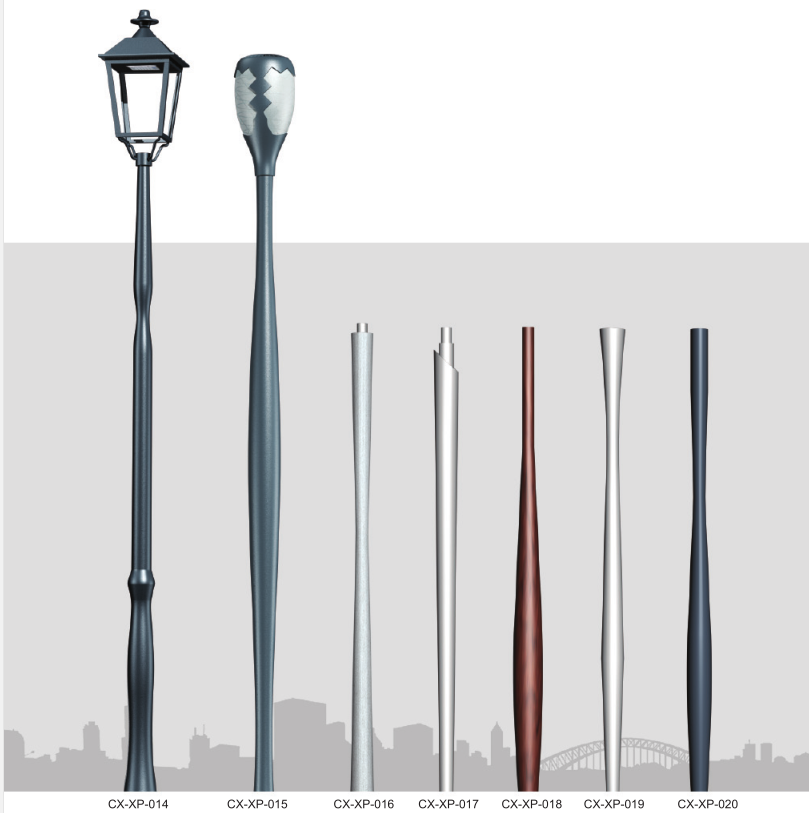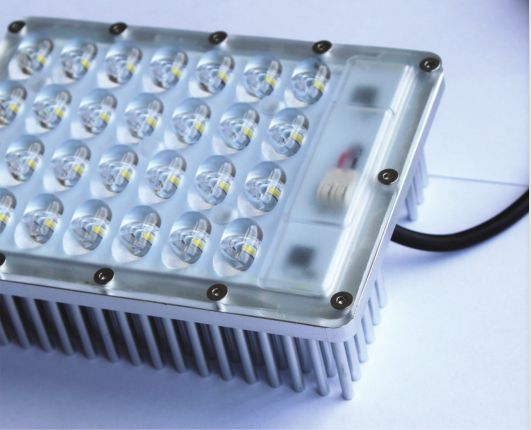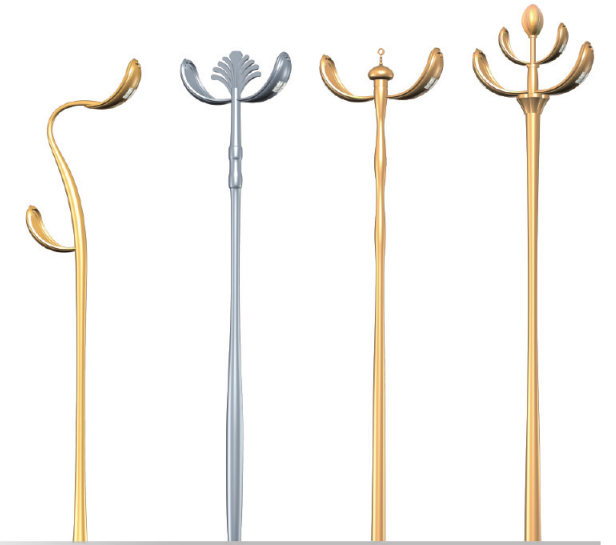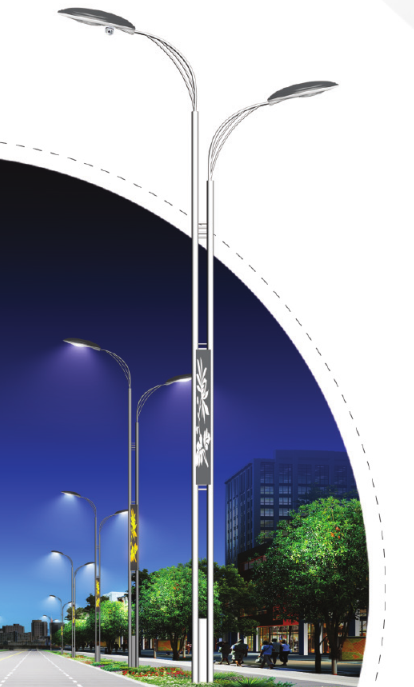This fast aging test method LED application factory can try!
[LEDinside] Abstract: Based on the five original materials and five major processes of LED packaging, this paper analyzes the main factors affecting the life of LED. Taking high temperature and high current as test conditions, the rapid aging test is used to quickly analyze and identify LEDs. For the rapid introduction of LED manufacturers to do the basis. As shown in Figure (1) above, the main raw materials of LED are five parts: encapsulant, gold wire, wafer, solid crystal glue and bracket. Each material directly affects LED performance. For example, poor encapsulation not only leads to low light extraction efficiency, but also causes the material to be easily damp and the risk of vulcanization increases. Figure 2 LED different drive current corresponding temperature (test instrument: infrared camera) As can be seen from the above figure, the LED drive current drops by 20%, and the corresponding LED chip surface temperature drops by 17%. In addition, 130° has exceeded the maximum withstand temperature of the LED chip (typically 115° for medium and small power chips and 125° for better points). Excessive temperature not only causes damage to the LED chip, but also reduces the efficiency of phosphor excitation. It also causes the reflective cover on the holder to yellow, which will eventually lead to serious LED light decay. Table 1 Initial photoelectric parameters of two LED particles A and B From the 2D picture of the chip, it can be seen that the chip size used by the A manufacturer is larger than that of the B manufacturer. The maximum bearing capacity of the A manufacturer chip is greater than that of the B manufacturer. That is, in the case of overcurrent operation, the light attenuation of the A manufacturer is smaller than that of the B manufacturer (2.2). The .4 aging test also proves this). Figure 3 A, B manufacturer chip 2D diagram Rapid aging at room temperature and 1.5 times current Table 3 Normal temperature, 1.5 times current life estimation map Rapid aging at 85 ° C, nominal current Table 4 85 ° C, nominal current luminous flux attenuation ratio summary
The new product line is the characteristic product of our company's production and development, mainly including the Anti-corrosive Aluminum alloy spinning lamp pole,Solar Camera light,Cylindrical Intelligent Street Lamp,No power LED Module .
1.Aluminum alloy spinning lamp pole
The spinning pole is the use of foreign advanced spinning equipment,forming a whole without welding,forming a conical or profiled bar.And then polishing,remove surface oil,burr and indentation.Then after the quenching intensity,to T6 state,in line with international standards.The product never rust ,strong corrosion resistance,diversified surface treatment process,the appearance of simple fluid lines.Light weight and convenient installation and transportation,the rod body can be 100%recycling,low melting temperature.
Product features
â‘ Using spinning equipment advanced,the whole forming a non welding
â‘¡Product permanent does not rust,corrosion resistance
â‘¢Diversified surface treatment technology,make the appearance line succinct smooth
â‘£The light weight,convenient installation and transportation
⑤The rod body can be 100% recycling,melting temperature is low.
2.Camera street light
The camera street light is used to use the infrared network high definition intelligent ball's various features so that it can be widely used in the need of large-scale hd quality control of the site.
Functional properties
â‘ Smart Function:Smart Tracing,Smart Inspecting,Smart Road Monitor
â‘¡System Function:Smart Video,Smart Photo Enhancement
â‘¢Movement Function
â‘£Network Function
3.Intelligent Street Lamp
Intelligent Street Lamps are also called intelligent lighting or smart street lights.It adopts the Internet of things and cloud computing technology to comprehensively upgrade the urban public lighting management system, so as to realize centralized control, operation and maintenance information and intelligent lighting of street lamps.The most advanced versions of Intelligent Street Lamps have been designed to create a happy atmosphere in roads, streets, squares and other places.The design of intelligent street lamps can only be designed by a wide range of discussions and environments that provide an aesthetic consistency.
Product feature
1.Sensor
Monitoring urban environment conditions
Sensor norise
Air pollution sensor
Temperature/humidity sensor
Brightness sensor
Municipal construction monitor
2.RFID
Special crowed monitor
CMC monitor
Community security monitor
Municipal facilities monitor
3.Communication Services
Micro base station
Street lights embedded WIFI hot spot
4.Video Monitor
Security monitor
Vehicle monitor
5.Emergency Broadcast
Active of the external field radio monitoring center
6.Intelligent Lighting
Cellular cooling technology
Based on the luminance uniformity of light distribution
Intelligent single lamp/center controller
Variety of modular design lamp,holder is optional.
7.Information Release
Advertising exposure
Current politics news
Information release
8.Charging Column
Electric car
Electric bicycle
4. Led Module
â— Color temperature 3000-6000K
◠Light≥90LM/W
â— Matching the 2.3.4 lane,tunnel and Landscape Lamp,floodlight dedicated lens.Ensure that intensity and uniformity.
â— Glare index Signification reduce the original LED module size,removal of power supply problems.Low demands for application situation and installation personnel .More suitable for the transformation of traditional lamps.
Product features
â‘ The solid heat conduction,Plug-in package technology
â‘¡Alternating current method,Alternating current direct drive to overturn the traditional application.
â‘¢Avoid long-distance power.Transfer will have excess loss.
â‘£No power supply ACLED
⑤Customized LED lens
â‘¥Automatic dimming system intelligent.
⑦Wide application,flexible combination.
Aluminum Alloy Spinning Lighting Pole,Lightest Aluminum Alloy,Aluminum Alloy Torchlight,Lightweight Aluminum Alloy Jiangsu chengxu Electric Group Co., Ltd , https://www.satislighting.com
Keywords: LED packaging materials, rapid aging
introduction
With the continuous development of LED products, the LED industry has presented a pattern of blooming from upstream wafers, midstream packaging or downstream applications. However, nowadays, from the state of blossoming to the mode of big shuffling, how to survive in the LED shuffling, the biggest factor is to improve the cost performance of its own products. Therefore, the current LED industry, whether it is Philips, OSRAM and other LED giants or some small domestic companies are carrying out a brutal price war. For LED lighting products, LED granules account for the highest proportion of cost, so LED application plants will continue to look for low-cost LED granule suppliers, and LED granule suppliers must make their products more cost-effective and must be reduced. Therefore, the raw materials such as LED chips, gold wires, and brackets are the first to be replaced.
At present, the cost reduction rate of LED pellets has been increased from the previous quarterly cost reduction to monthly cost reduction, so how to control the LED reliability is very important. If the test method using LM 80/LM 79 obviously cannot meet the requirements of the application factory, the test cycle of LM 80 is generally 6000 hr normally. The price of LED granules has been updated several times after verification in this way. Therefore, for LED application plants, it is necessary to judge the reliability of an LED in the shortest time, that is, to explore a low-cost, fast and effective method for screening LED particles.
LED package material introduction
With the increasing number of LED packaging companies and the pressure of cost and competition elimination, the wire used in packaging plants has evolved from the original 99.99% pure gold wire to K gold wire, palladium-plated copper wire, and these wires are thermally conductive. The rate will decrease, and the ductility will be reduced. This will be sensitive to the stress generated by the outside world, and it is easy to cause disconnection. For example, because the LED is a moisture sensitive device, if there is moisture in the LED, when the patch is completed, During reflow soldering, stress is generated due to thermal expansion. If the ductility of the wire is not good, the wire may be broken due to stress, which may cause serious death after reflow.
In addition, due to the pressure of cost, many packaging factories are reducing the size of the wafer, and the overcurrent operation, for example, the early 10*30mil chip will only achieve 0.1W, drive to 30mA, and now some manufacturers will overload to 100mA, so The maximum withstand current of this wafer has been exceeded, and the risk of light decay is too great.
Another important material that has a major impact on LED life is the stent. For the same LED, in order to obtain more luminous flux under the premise of constant cost, the most effective method is to drive over current, but this operation will cause the current density to be too large, resulting in a very large increase in heat, as follows Figure 2 shows the same 2835 1W LED as the candle light, pushing the temperature corresponding to different currents.
At present, the small and medium power (below 0.5W) is still used by PA9T. Some manufacturers even use PA6T for cost considerations and are not resistant to high temperatures. The best performance for high temperature resistance is EMC, followed by PCT, then PA9T, and PT6T is the worst performer.
Discussion on the method of rapid aging of LED
This paper is based on the LED application factory to explore the rapid aging test method of LED particles. When the LED application factory obtains the sample provided by the LED packaging factory, it is divided into three parts for screening test: 1. Perform initial photoelectric parameter test on LED particles, including under different parameters. Photoelectric parameters, chip size, etc.; 2. Normal temperature, 1.5 times current rapid aging test; 3.85 ° C, nominal current rapid aging test. The following is an example of a practical case.
It should be noted that the life estimation of the rapid aging test in this paper is for reference only. There is currently no standard for rapid aging test, so this method is only used as a lighting application factory under the same test conditions. The commercial LED particles are subjected to a comparative test, and a preferred reference is selected.
Initial photoelectric parameter test and chip size measurement
The initial parameters of the two LED particles of A and B were tested. The test results are shown in Table 1. It can be seen from the table that the initial luminous fluxes of the two materials A and B are equivalent, and the voltage of the B manufacturer is lower, and the overall luminous efficiency is higher than that of A. Manufacturer.
Take 5pcs each (conditionally take appropriate multi-point quantity) for normal temperature (25 °C), 1.5 times current (225mA) rapid aging test, test the photoelectric parameters in four stages of 0hr, 48hr, 96hr, 168hr, to change the luminous flux The amount of attenuation of each node is calculated. As shown in table 2. The life curve of the LED particles is simulated according to the attenuation ratio of each node, as shown in Table 3. From the life curve, it can be seen that the LED life of the A manufacturer is significantly better than that of the B manufacturer.
Table 2 Normal temperature, 1.5 times current luminous flux attenuation ratio
Take 5pcs (conditional and appropriate multi-point quantity) for 85 °C, nominal current (15mA) rapid aging test, test the photoelectric parameters in four stages of 0hr, 48hr, 96hr, 168hr, calculate the amount of change in luminous flux The attenuation ratio of each node is shown in Table 4. The life curve of the LED particles is simulated according to the attenuation ratio of each node, as shown in Table 5. From the test results, in the high temperature aging test, the life of the A manufacturer is higher than that of the B manufacturer.
Table 5 85 ° C, nominal current life estimation chart
Through the discussion in this chapter, we can explore the method for quickly screening LEDs for application plants. When getting LEDs from multiple packaging factories at the same time, we can first dissect the LEDs and measure the size of the LED chips. The larger the chip is, the larger the ESD is. The anti-high current capability is sure to be better; secondly, normal temperature, 1.5 times (or double) rapid aging test and 85 °C, nominal current aging test are performed, and the life expectancy is drawn according to the luminous flux attenuation ratio of each node at 0 hr, 48 hr, 96 hr, and 168 hr. Estimate, compare the ability of each manufacturer's luminous flux maintenance rate, so as to compare and judge the advantages and disadvantages of each manufacturer, and finally, in combination with the unit price of each manufacturer's LED, select the most cost-effective LED particles in the shortest time. (Author: Feng Shaoming)
If you need to reprint, you need to authorize E-Mail on this website. And indicate "from LEDinside", unauthorized reprint, broken chapters and other acts, this website will be held legally responsible! E-Mail:
For more information, please pay attention to LEDinside official website () or search for WeChat public account (China LED online). 





